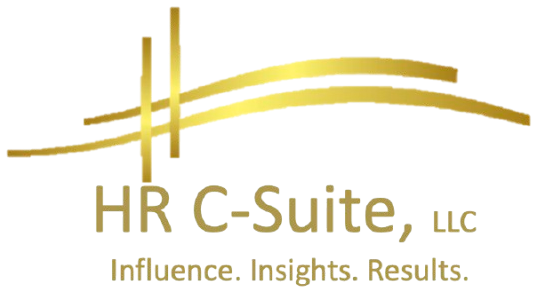In the chaotic world of business management, there's a philosophy that stands out for its elegance and efficiency: Lean Leadership. Originating from the manufacturing floors of Toyota, lean principles have transcended industries, proving that you can indeed do more with less. This isn't just about cutting costs or reducing staff; it's about a holistic approach to leadership that focuses on value creation while eliminating waste in all forms. Let's delve into what Lean Leadership entails, why it's becoming a beacon for modern management, and how leaders can implement this approach to achieve extraordinary results.
The Essence of Lean Leadership
Imagine you're a sculptor, not with marble but with organizational processes. Lean Leadership is akin to chiseling away everything that isn't the masterpiece, revealing the essence of your organization – its value. Here's what this approach looks like:
- Value-Centric: At its core, Lean Leadership is about understanding what truly adds value from the customer's perspective. Every decision, process, or action is evaluated through this lens: does it enhance value?
- Waste Elimination: Lean identifies seven types of waste (overproduction, waiting, unnecessary transport, over-processing, excess inventory, unnecessary motion, and defects) and seeks to minimize or eliminate them. In leadership, this translates to cutting out inefficiencies in decision-making, communication, and operations.
- Continuous Improvement (Kaizen): Lean isn't a one-time overhaul but a continuous journey of improvement. Leaders foster a culture where small, incremental changes are celebrated, and everyone is involved in the process of making things better.
Why Lean Leadership Now?
In an era where resources are finite, and competition is fierce, Lean Leadership has never been more relevant:
- Resource Efficiency: With global economic pressures, companies must do more with less. Lean Leadership ensures that every resource, from human to financial, is used optimally.
- Agility: The business landscape shifts rapidly. Lean principles prepare organizations to be agile, able to pivot or adapt without the burden of excess, ensuring they can meet changing market demands.
- Employee Engagement: By involving employees in problem-solving and improvement, Lean Leadership taps into the collective intelligence of the workforce, boosting morale and innovation.
Implementing Lean Leadership
To transform from a traditional to a lean leader, here's how you can start:
1. Cultivate a Lean Mindset:
- Lead by Example: Show your commitment to lean by being the first to identify waste in your own work. If you're spending too much time in meetings that don't produce results, change that.
- Educate and Empower: Train your team in lean principles. Teach them to see waste not as a flaw but as an opportunity for improvement.
2. Redefine Value:
- Customer Focus: Regularly reassess what your customers value. This might mean surveys, feedback loops, or even shadowing customers to understand their pain points and desires.
- Value Stream Mapping: Map out all the steps from concept to customer delivery. Identify where value is added and where it's just noise.
3. Streamline Processes:
- Simplify: Look at every process with a critical eye. If a step doesn't add value, consider removing or automating it.
- 5S Methodology: Sort, Set in order, Shine, Standardize, and Sustain. Organize the workplace to reduce waste and enhance efficiency. This applies to physical spaces as well as digital workflows.
4. Foster a Culture of Continuous Improvement:
- Kaizen Events: Host regular workshops where teams come together to solve specific problems or improve processes.
- Open Feedback Channels: Encourage and act on feedback from all levels. An idea from the shop floor might save millions or improve customer satisfaction dramatically.
5. Lean Metrics:
- Performance Indicators: Use metrics that reflect lean principles like lead time, cycle time, defect rates, and employee engagement rather than just financial metrics.
- Visual Management: Make performance visible. Use dashboards or visual management boards so everyone can see how processes are performing and where improvements are needed.
Leadership Challenges in a Lean Environment
Adopting Lean Leadership isn't without its challenges:
- Resistance to Change: People often resist change, especially if it means doing things differently from how they've always been done. Leaders need to be patient, persuasive, and persistent.
- Balancing Speed with Quality: Lean isn't about rushing through tasks; it's about doing them right the first time. Leaders must ensure this balance doesn't tip towards speed at the cost of quality.
- Sustaining the Lean Culture: Once lean practices are in place, maintaining them requires continuous effort. Leaders must keep lean at the forefront of organizational culture.
The Future of Lean Leadership
In the future, Lean Leadership will likely only grow in importance. As technology evolves, AI and automation will play significant roles in identifying and eliminating waste, making lean practices even more precise and effective. However, the human aspect - fostering leadership that values people, encourages innovation, and promotes a culture of continuous learning - will remain at the heart of this approach.
Wrapping it Up
Lean Leadership is more than a set of tools or techniques; it's a philosophy for life within an organization. It's about doing more with less by focusing on what truly matters - creating value for customers while respecting and engaging the workforce. By embracing this approach, leaders can steer their organizations towards not just efficiency but excellence, proving that in the art of leadership, less can indeed be more.
